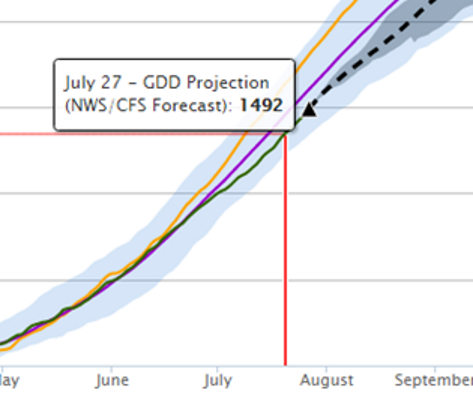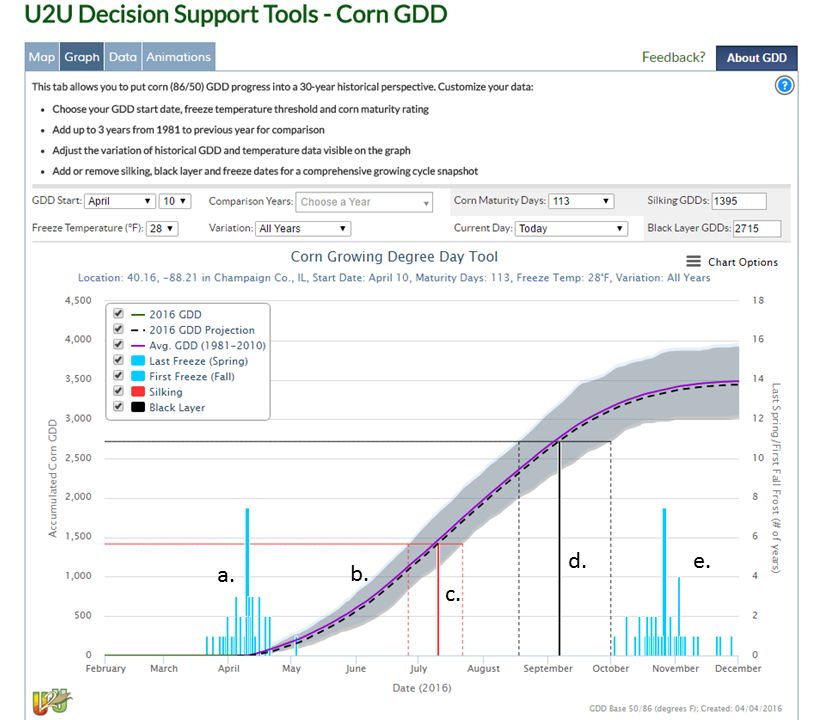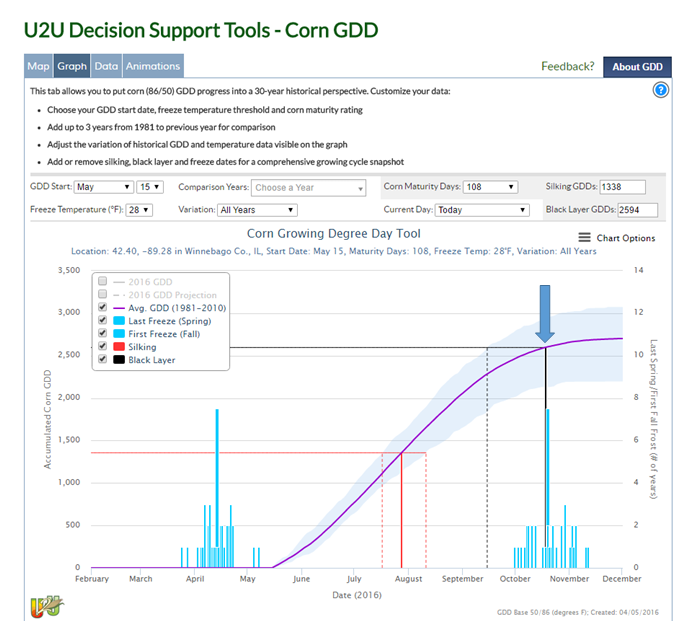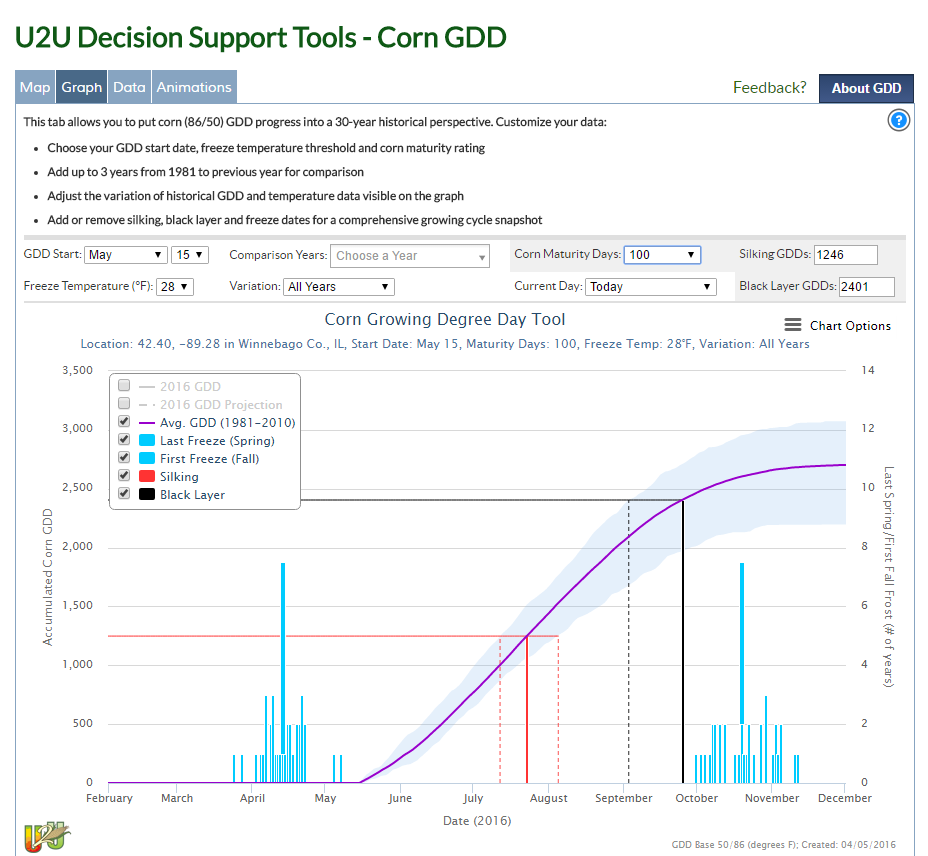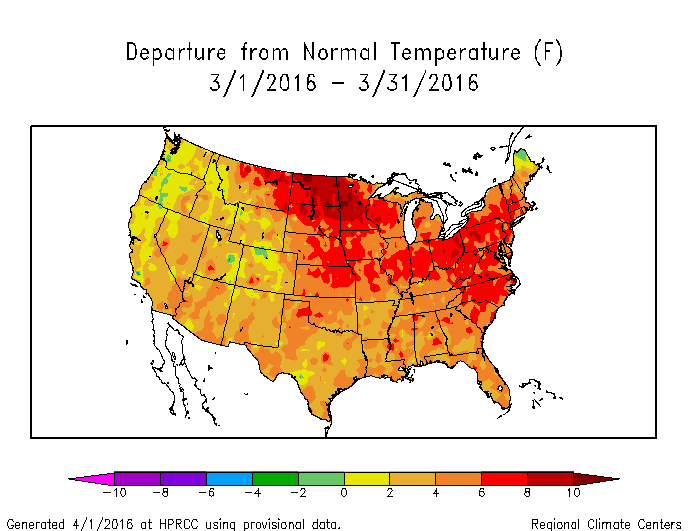As I posted last week, we are finishing up a 5-year USDA project called Useful to Usable (U2U), which is designed to provide a set of decision support tools for corn farmers. The tools can be found at www.agclimate4u.org, which redirects you to a server at Purdue University. Or you can just go directly to the tool here. A quick tutorial on the tool can be found here and a general discussion about corn production and growing degree days can be found in the Illinois Agronomy Handbook.
In last weeks post, we covered using the corn growing degree day (Corn GDD) tool before planting. This week I wanted to briefly cover how the Corn GDD tool looks during the growing season. This is a screenshot from July 26 of last summer (below).
The orange line is the comparison year of 2012, noted for its heat. The purple line is the 1981-2010 average. The green line is the accumulated Corn GDDs to date. The dashed line is the projected Corn GDDs using the National Weather Service (NWS) forecast out to 30 days, and the 30-year climatology after that. The lighter shading around the lines represents the historical variability of the daily Corn GDD accumulation associated with the purple line. The darker shading around the 30-day forecast represents the range of Corn GDDs based on the NWS forecast. After 30 days, the same darker shading represents the range of Corn GDD accumulations based on the remainder of the season.
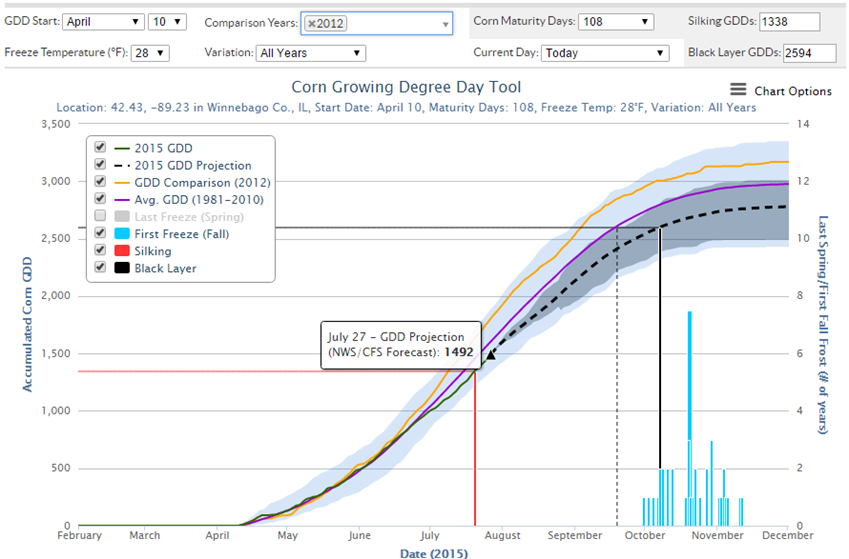
If this is too much information, you can turn lines off by clicking its label in the legend box. Also, you can move the mouse pointer over any part of the graph and get a pop-up box with more details. In this case, I had moused over the forecast line for July 27, indicating that 1492 Corn GDDs were expected to be accumulated by that date.
Here is a zoomed-in view of the above graph, showing the core of the growing season. You can see the accumulated Corn GDD for 2012 (orange line), the average (purple line), and the current year (green line), and the forecast (dashed line).
So, give the Corn GDD tool a try – it’s free!
